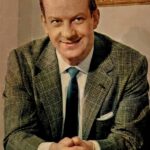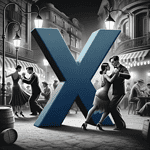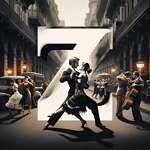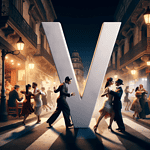Table of Contents
Introduction
There was a period in the development of Tango, when everyday dancing was on the decline, and Tango lost its prime place in public attention, even in Argentina and Uruguay. This period started in the late 1950s and lasted until the 1980s. While in this period Milongas were sparse and the number of “Orchestras Típicas” that had frequent gigs was reduced to a handful, there was one show on Argentine television that helped to keep Tango alive: Enter “Grandes Valores del Tango”.
From Radio to Television
“Grandes Valores del Tango,” created by Alejandro Romay, stands as a monumental success in Argentine television history, especially for showcasing Buenos Aires music. The show, unique for its nearly four-decade tenure, started as a radio program in 1951, transitioning to TV (IMDb) in late 1963 on Channel 9 with Hugo Del Carril as host. Its popularity led to a name-brand magazine publication.
In 1951, Alejandro Romya started “Grandes Valores” as a radio show on LS10 Radio Argentina and LR9 Radio Antártida (Todo Tango). Private radio broadcasting stations were one of the prime distributors of tango music from the 1930s up until the 1950s.
Radio stations offered exclusive contracts to the famous tango orchestras and singers, and the wide reach of radio transmissions could turn tango compositions into instant hits, going beyond the medium of live music performed at Milongas. While later tango radio shows would mainly reproduce shellack or vinyl recordings, the highlights of the early radio shows were broadcasts of live performances.
Although the period of the 1960s–1970s saw a lot of economic crisis, still more and more households owned TV sets, often assembled in local factories. This transition was not just a change of medium; it was a step in bringing live images of Tango interpretations to a broader audience. Therefore, it was only consequent to move “Grandes Valores de Tango” from radio to television.
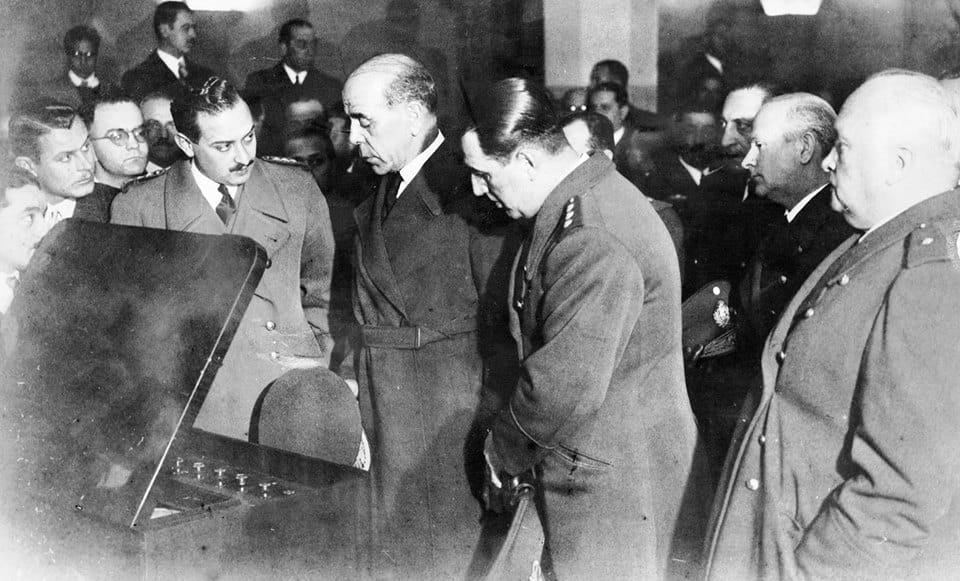
The Show
Running from 1963 to 1992, each episode of “Grandes Valores del Tango,” lasting about 1 hour and 15 minutes, became a weekly celebration of Tango music and dance. The show featured a range of Tango artists, from legendary figures such as Floreal Ruiz, Héctor Mauré, and Osvaldo Pugliese to emerging talents.
The first host, Hugo Del Carril, was a famous actor and singer, maybe most remembered for personifying Carlos Gardel in the movie “La Vida de Carlos Gardel“.
Surviving the storms
The impact of “Grandes Valores del Tango” on the Tango world cannot be overstated. Over its three-decade lifespan, the show became a beloved institution, revered for its dedication to showcasing the Tango of the 1960s and 1970s. In this period, Tango was not only side-railed because the public turned towards rock and pop music but also because, in the turbulent politics of Argentina, Tango was often considered to be of subversive language and nature and was therefore suppressed by military-led governments.
Sadly, much of the show’s archival footage is lost, representing a significant cultural gap similar to the tragic loss of much of the original recordings of the golden era.
In Romay’s later years, despite efforts to revive the show, it couldn’t compete with other media.
The man behind the show
Alejandro Romay embarked on his journey in the world of media as a radio announcer at Radio Rivadavia in 1940, showcasing his talent at a young age. His career trajectory soared as he assumed key roles at Radio Mitre and later became the director of Radio Del Plata in 1947.
In a transformative move, Romay took the helm of Canal 9 in late 1963, becoming its majority shareholder and renaming it Canal 9 Libertad. The 1970s brought challenges as the government intervened in channels 9, 11, and 13. Romay, undeterred, moved to Puerto Rico, where he acquired two television channels.
In 1983, as democracy returned, Romay came back to Argentina, creating Telearte S.A. and reclaiming Canal 9. The channel flourished, becoming a leader in audience ratings from 1984 to 1989. During the 1990s, he achieved remarkable success by positioning Canal 9 as the leading channel in audience ratings, earning him the title of “el zar de la televisión.”
Alejandro Romay, passed away on June 25, 2015, at the age of 88. His legacy lives on through his family, including his children Diego, Viviana, Mirta, and Omar, who continued his entrepreneurial endeavors.
Conclusion
The universe of Argentine Tango is rich and diverse and has changed multiple times over the decades. Tango dancers all over the world almost exclusively indulge in the dance music recordings of the 1940s, feeling less connection to the “Show Tango” for broader audiences. Still, Alejandro Romay and his shows contributed a lot to the survival of the tango through Argentina´s difficult decades and provided a basis for the revival in the 1990s.
Frequently Asked Questions about Alejandro Romay
Why was Alejandro Romay called “the zar of the television”?
Romay earned the title “the zar of the television” due to his significant contributions to the television industry in Argentina. He played a key role in elevating the quality of television content and achieved notable success with Canal 9.
What were Alejandro Romay’s major contributions to television programming?
Romay was a creative force behind iconic programs such as “Grandes valores del tango,” “Almorzando con Mirtha Legrand,” and “Sábados de la bondad,” reshaping the landscape of Argentine television.
What awards did Alejandro Romay receive?
Romay received several awards, including a Martín Fierro honorífico in 2003 for his outstanding career. He also received the Premio Éter and a special mention in the Premios Konex for his contributions to communication and journalism.
Notable Sources
- “Falleció Alejandro Romay, el zar de la TV argentina.” Télam, 25 de junio de 2015.
- “Alejandro Romay.” Infobae.

